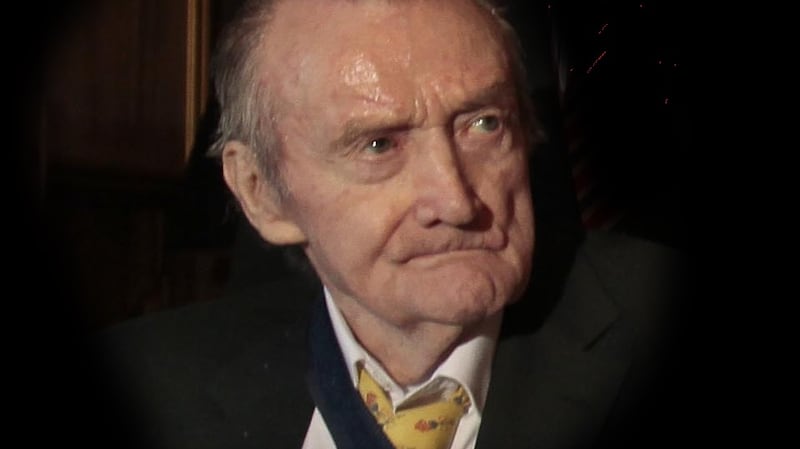Born: October 18th, 1925
Died: June 20th, 2019
"We could sure use you guys at Villanova" – seven simple words spoken to Ireland's first US scholarship athlete Jimmy Reardon, and the rest is Irish distance running history.
Reardon, a 400m runner, was captain of the Irish athletics team at the 1948 Olympics in London, sitting in the athletes' dining hall with thrower Cummin Clancy and miler John Joe Barry, and chatting to two American athletes, George Guida and Browning Ross.
Guida and Ross were both on scholarship at Villanova University, the small rural-like campus 12 miles northwest of Philadelphia, and reckoned their already famous coach, Jumbo Elliott, would snap up some Irish services, which he did.
In Barry’s self-penned autobiography The Ballincurry Hare, a gem of a sporting book now sadly out of print, he recalls how Reardon sparked the idea, before all three sealed the deal.
“It was Reardon who put the question to him: ‘George, you’re telling me if you could run or jump well enough, you’d get a scholarship to an American university, which would include full tuition, full board, books, etc?’ ”
“In my opinion,” Guida continued, “both of you would easily qualify, from what I know, and from what you told me about yourselves. The very fact that you are both here representing your country, you must be the best Ireland has to offer at this moment. Villanova is very short of middle-distance runners at the moment, and nothing would go down better than to have a few Irish boys on the squad.”
Lasting influence
That October, Reardon packed up all his belongings and left the old bus on North Bull Island in Dublin Bay and moved with his young wife, Kathleen, to Villanova. So began a pioneering journey that continues more than 70 years later, and remains one of the most lasting influences in Irish sport.
Clancy and Barry soon followed, too late to enrol for the first semester, but all three were full-time Villanova student-athletes by 1949, and all three graduated together in 1953.

Ronnie Delany came soon after and won the Olympic 1,500m in 1956, during his second year at Villanova, becoming a close colleague of Reardon, and the Irish Pipeline, as it became known, has been kept going in the seven uninterrupted decades since.
Noel Carroll and Frank Murphy in the 1960s; Donie Walsh, John Hartnett and Eamonn Coghlan in the 1970s; Marcus O'Sullivan, Gerry O'Reilly and Olive Burke in the 1980s; Sonia O'Sullivan, Aidan O'Regan and Ken Nason in the 1990s; Geraldine McCarthy and Richie Corcoran in the 2000s; Síofra Cléirigh Büttner and Harry Purcell in the 2010s, with Charlie O'Donovan, the promising distance runner from Cork, freshly enrolled at Villanova last year, ensuring that pipeline continues into the 2020s.
School star
He was born James P Reardon in Parteen, Co Tipperary, on October 18th, 1925. Aged four, his parents moved to Ardee, Co Louth, where he attended the local De La Salle, his first sport being Gaelic football. Later when attending secondary school at St Mary's in Rathmines, Dublin, he took up athletics, winning an Irish schools sprint double in 1943.
He then joined Donore Harriers, and while stationed at Alexandra Basin with the Marine Corps, established himself as the best 400m runner in Ireland. He won the British title in 1947, and in preparation for London lived a spartan life on Bull Island, to "live, eat, sleep and drink athletics".
He was unfortunate not to make two Olympic finals: he progressed through the early rounds of the 400m, finishing fifth in the semi-final, in 47.9, the fastest non-qualifier; he was also part of the 4 x 400m relay, along with Charles Denroche, Paul Dolan and Reggie Myles, who looked sure of making the final before somehow dropping the baton.
His relationship with Irish athletics promptly soured when they refused to pay his way back from the US for the 1952 Olympics in Helsinki, the same fate served to his Villanova team-mates Clancy and Barry. What they could not deny was his talent: his 400m best of 47.6 second would have won him a bronze medal at the 2018 Irish championships, 70 years after he ran it.
With the look of a 1940s matinee idol, he carved out his own post-athletics career in the US, running a foreign-car import business, Haverford Motor Sports , in the affluent suburb of Philadelphia, also preparing racing cars for the 12-hour classic at Sebring Raceway in Florida, before returning home to Ireland in the mid-1980s. Two of his daughters, Deborah and Kathy, were back from the US to help him celebrate his 93rd birthday at Leopardstown Park Hospital in south Dublin last October. He is also survived by his sons, James and Robert, grandchildren, and great-grandchildren.










